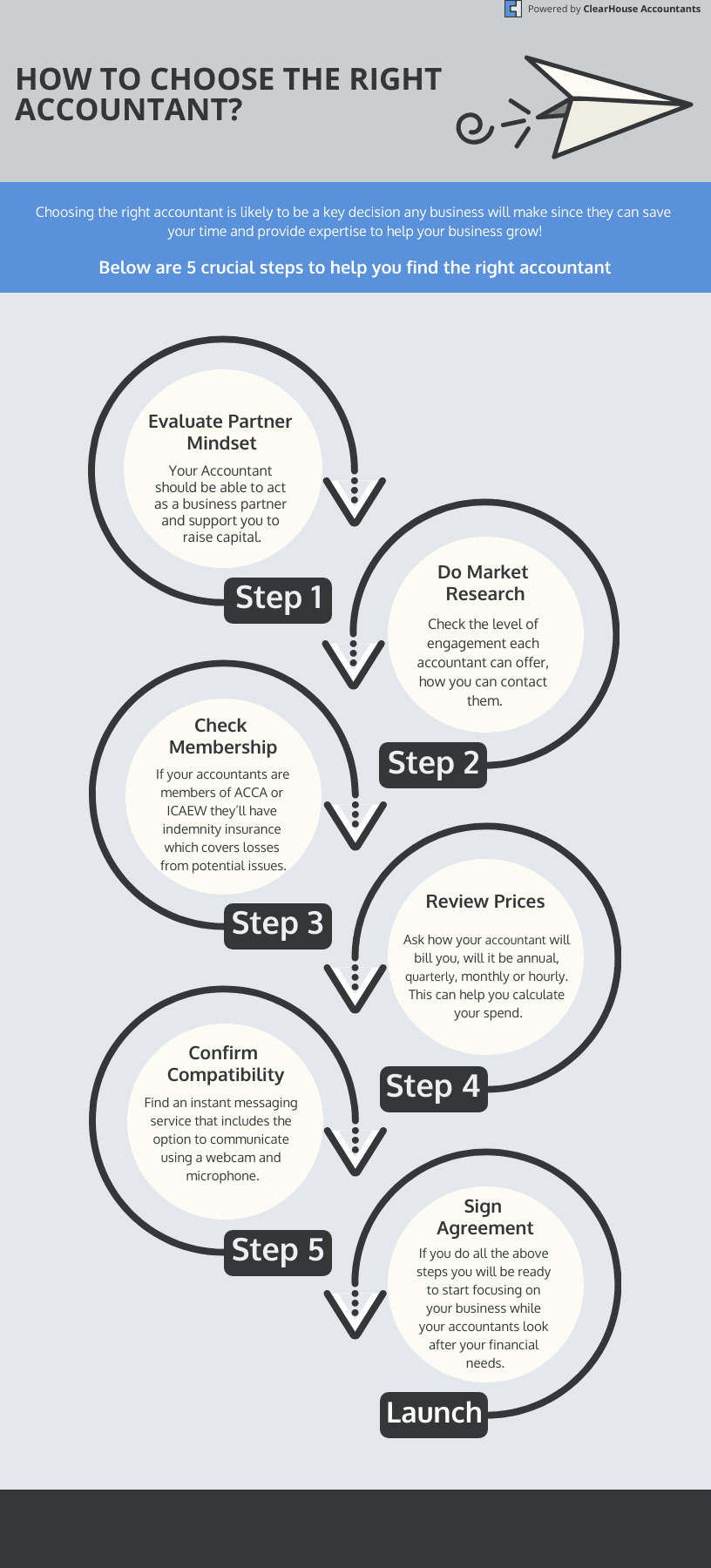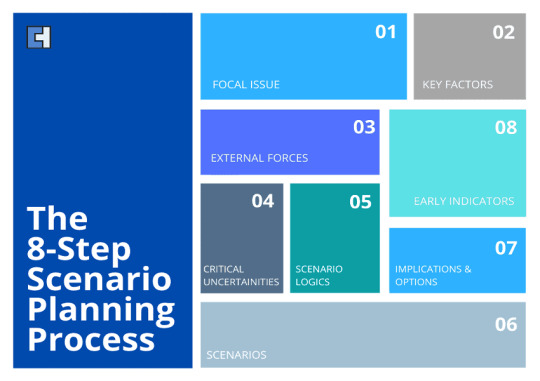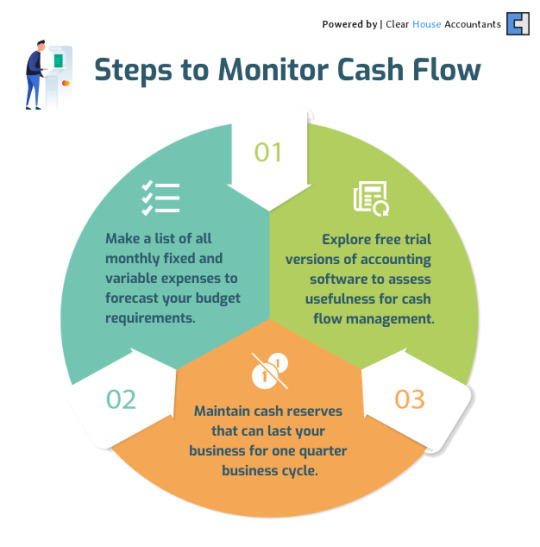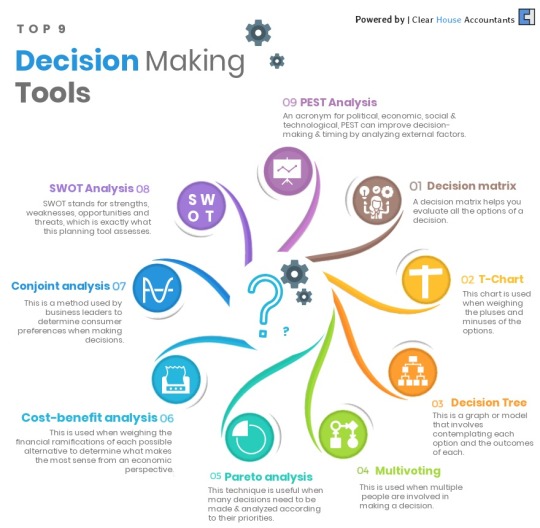Text
Write A Great Business Plan

Business plans are crucial to businesses success. Read our step by step guide on how to write the perfect business plan.
Video: 10 Tips To Build A Strong Business Plan
We summarized top 10 tips in this video to build a strong business plan for your business that will give your business a boost
#business plan#business plan template#strong business plan#write business plan#build strong business plan#tips to build strong business plan#accounting firm#accountant in london#accountants
1 note
·
View note
Text
Double Your Savings

The Government Help to Save Scheme offers 50% savings bonus for low-income earners. Read more about this scheme and to boost your savings.
Video: 5 Quick ways to Save Tax
Few simple checks can help you save tax. Watch the video learn about these checks and how most likely they will affect you.
#Double your saving#Tax saving#Save tax#Accountants in london#Clear House Accountants#Tax efficiency#Accountant#Tax
0 notes
Text
Pre-Registration VAT On Purchases

Claiming pre-registration VAT can be a tricky process, here is your mini guide to ensure you can reclaim all the VAT you're eligible for!
Video: VAT Registration The Pros and Cons
A Guide about Pros and Cons Of VAT Registration, how to Reclaim and how to cancel your VAT Registration.
#Pre-Registration VAT#VAT#Value Added Tax#VAT Registration#Accountants in London#Tax#VAT Accountants#Tax Accountants#Accounting Firm
0 notes
Text
Protecting Your Small Business

Video: 10 Cyber-Security Tips To Protect Your Business Online
Watch the video to learn about the cyber-security measures to help you increase the resilience of your business.
#Protect Your Small Business#Protect Small Business#4 Tips to Protect Your Business From Fraud#Small Business Accountants#business accountant#Accountants in London#Accountant
0 notes
Text
Executive Dashboard – A Complete Overview

Want to create more effective business intelligence Executive Dashboard? Read more to learn what you need to build an effective dashboard.
Video: Business Dashboard Design – Best Practices
Poorly Designed Dashboards Could Fail to Convey Useful Information and Insights. Watch the Video to Understand the Importance of Proper Business Dashboard Design.
#Executive Dashboard#Effective Executive Dashboard#Business Tools#Effective Decision Making#Better Business Decisions#Improve Business Performance#Enhanced Business Dashboard#Startup Accountants#Business Advisors#Business Dashboard Designs#Business Dashboard#Accountant#Tax Tips
0 notes
Text
An Overview Of Series Funding

Are you looking to raise capital for your startup? Our article provides an overview of Series Funding and how it can work for your startup.
Video: Series A, B, C, D, and E Funding: How It Works?
Watch the video to get an overview of different funding options, the money involved in each funding options and how we can help.
#Funding#Series Funding#Guide to Series Funding#Fundraising Terms#Accountants#Raise Capital#Funding Process#Business Accountants#Startup Accountant#The Startup Lifecycle
0 notes
Text
Changes To CGT On Property Sales

From April 2020, Capital Gains Tax on property gains is changing. Read more about how to take advantage of the new rules.
For More Information Watch Video: A Brief Guide to Capital Gains Tax
#Capital Gains Tax#Tax Accountant#Selling a Property#Property Sales#Tax Specialists#Self-Assessment#Guide To Capital Gains#Capital Gains Tax Rates#Self-Assessment Tax#Accountant#Accountants in London
0 notes
Text
9 Reasons Why Small Businesses Need An Accountant

Business accountants provide valuable information on how to save and manage money. Learn why you should hire an accountant for your business.
#Accountant#SmallBusiness#BusinessAdviser#OnlineAccountants#AccountingFirm#TaxAccountants#Bookkeeping#CloudAccountingSoftware#ChooseRightAccountant#ValueAccountantcanAdd
0 notes
Text
Finding The Right Investment Relief For Tax-Payers

There are many tax-relief schemes for high rate tax-payers. Read our guide to find out which Investment Relief Scheme works best for you.
Watch Our Video: A Quick Guide To SEIS And EIS Tax Relief
#Investment Relief#Tax-Payer#Accountant#Tax Accountant#Business Decision#Tax Relief#Entrepreneur's Relief#Personal Tax Accountant#Investor's Relief#Accountants in London#Quick Guide to SEIS and EIS Tax Relief#HMRC#Enterprise Investment Scheme#Seed Enterprise Investment Scheme#Accounting Firm
0 notes
Text
A Clever Tool For Strategic Planning

Scenario planning is a disruptive strategic planning tool used to craft long term strategies using a wider array of scenarios. Learn more.
Watch our video: 7 Ways To Apply Scenario Planning
#Strategic Planning#Scenario Planning#Tools for Strategic Planning#Importance of Scenario Planning#7 Ways to Apply Scenario Planning#Ways to Apply Scenario Planning#Accountants in London#Accountant#Accountants#Accounting Firm#Business Advisors
0 notes
Text

Thinking of starting a business in the UK? Our guide explains everything you need to start and grow a business in the UK.
Watch our video: How to Open a Business Bank Account in the UK
#Startup Business Guide#Start a Business in the UK#Accountant#Startup Accountants#Start a Business 2020#Company Formation#Income Tax#Personal Tax Accountants#VAT#VAT Accountants#Accounting Firm Near Me#Startup Package#Best Crowdfunding Platforms#Insurance Guide#Business Bank Account#Budget Plan#Cash Flow Forecast#Startup Methodologies#Business Exit Strategy#Accountants in London
0 notes
Text
Top 7 Tools For Business Growth

Our list of top tools for business growth, which if used properly, can help make your business grow and stay ahead of the competition.
Watch our video: Why are Accounting Software important in a Business?
#Business Growth#Grow Your Business#Tools for Business Growth#Accounting Firm#Accounting Tools#Marketing Accountants#Startup Accountants#Experts in Growth Solutions
0 notes
Text
The Tax Aspects Of Selling Your Business

What Tax Efficient Factors should you Consider When Selling or Closing your Business? Read our article to learn more.
For more information read our article here.
Watch our video: 7 Steps to Increase the Value of Your Business
#Payroll#Payroll Accountant#Accountants#Tax Accountant#Tax Accountants#Financial Advisor#Selling your Business#Maximize Business Tax Effieciency#Selling Your Business Tax Effieciently
0 notes
Text
Steps to Benchmark Your Business

How to Benchmark your Business?What is Benchmarking?
Benchmarking is the process of improving performance by determining the best practices for sales and operations, then implementing them. Benchmarking is conducted by comparing the company’s performance against that of competitors or with their own performance over the past years. Business owners use benchmarking to promote, as well as, innovate their business systems and processes. This enables them to craft strategies that are in line with their business’s growth strategy. The government’s best practices in benchmarking should be read in conjunction with this guide.
What are the Advantages of Benchmarking?
One of the primary advantages of benchmarking is that it helps companies redefine their goals and set realistic standards to adhere to. Moreover, it creates room for improvement by identifying and employing optimal business practices. Managers can assess the efficiency of their company processes and services, compared to what is offered by the leading businesses in the industry. These can then be taken as an example to employ new or improved business practices that will enhance business performance. This also allows management to introduce new and innovative practices, which, as a result, improve the overall performance of the company.
Our performance reporting services were built around exactly this concept of setting measurable goals and measuring them against industry-grade benchmarks. Performance of a business can be impacted by anything from foundational issues such as poor bookkeeping, inefficient hiring to higher-level issues such as underperforming products or services. Our bookkeepers have worked hard to curate guides to help with performance issues when processes such as bookkeeping etc. are done incorrectly, read more here.
Related: Are you planning to start your own business? Learn more from our guide on How to Start Your Business in the UK.

Video: Types of Benchmarking
In this video, we’ve explored the various types of benchmarking and how these approaches can benefit your business. Have a look at them now.
youtube
Steps of Benchmarking
In order to successfully benchmark your business processes, it is vital that you have use a systematic and structured approach. We have divided the required approach into 8 easy to follow steps:
1. Select the Process to Benchmark
In order to begin the benchmarking process, the first step is to identify which benchmarking indicators are fundamental to your business. You will be dedicating a lot of time and effort into analyzing and improving them, so it’s prudent to prioritize based on what’s important to all stakeholders. Furthermore, this will help you establish the scope of the benchmarking process by concentrating on one or two key indicators.

2. Determine Who you Want to Benchmark Against
It’s important to ascertain who you will benchmark against. Whether you decide to benchmark against a competitor or a company outside the industry, you need to compile a list of potential businesses. You can refine the list down to a few optimal companies, which best fit the scope of your benchmarking requirements.
You can also benchmark against your company’s past processes. This is suitable when you need help to determine the best practices for implementing a particular task with minimum effort or resources.
3. Document your Current Process
In order to begin benchmarking, you will first need to outline your current processes. This will help you specify which areas need improvement. It will also make it easier to examine and compare them against competitors or internal past processes, as required.
4. Collect and Analyze Data
Collecting data is a critical step in the benchmarking process. You can start the research on your competitors’ best practices through formal interviews, informal interviews and questionnaires. You can also acquire information through websites, blogs, reports, marketing materials, and news articles. After you complete your research, you can begin analyzing your data.
If you are internally benchmarking a process, then collection of operational and financial data will be more convenient and readily available. After compilation of the required data, you can begin evaluating it.
5. Measure Performance Against Data Collected
Once you have collected all the necessary data, organize it in a useful manner, keeping causes for any patterns, outliers or inefficiencies in mind. You will then need to compare your processes to those of your researched companies. As you compare both, you should identify what is causing the inadequacies in your process.
6. Create a Plan
After you analyze your processes against your competitors, you need to identify what needs to be amended to close the performance gaps. Then you need to create a plan to implement those changes. The plan should not only cover any gaps, but also be an opportunity to brainstorm measures that are required to get ahead.
7. Implement Changes
Once a plan has been formulated, you will need to apply it to your company processes. After implementation, monitor the changes and employee performance thoroughly over a period of specified time. If there are new processes being introduced, make sure your staff is well trained, and have the expertise to complete their tasks. Identify any changes that need to be made, to the plan, to successfully implement it.
8. Repeat the Process
After you successfully implement a new process, examine it to see if there are any changes that need to be made. If modifications are needed, tweak your new plan and implement them. Otherwise consult your initial list for the next indicator to benchmark.
Benchmarking is a continuous practice. Constantly evaluating your processes and benchmarking them with the best practices will allow you to not only improve but to even overshadow your competitors.
Why is Benchmarking so Important?
There are a number of reasons why companies benchmark their businesses. The most notable are:
1. Companies use benchmarking to improve operational and financial efficiency. Comparing what the competition is doing, helps fill in the gaps between its own processes, what should be done and what they can further improve.
2. Benchmarking allows companies to pay closer attention to their strengths and weaknesses, which are crucial for successful strategic positioning. Use our expertly created Strength and Weakness analysis sheet to help you with analysing your strengths and weaknesses.
3. Benchmarking increases the knowledge-base of the employees working in the company. It helps accelerate the rate of organizations learning, and it also encourages a culture of knowledge and experience sharing within the firm.
Related: Are you unhappy with your employee recruitment process? Learn how you can effectively recruit new employees by reading our employee recruitment guide.
4. Benchmarking allows businesses to understand their relative cost position and also helps create a space for innovation and improvement.
Related: Most businesses suffer from uneven cash flow. You can cure your cash flow problems using the following steps.
Key Takeaway about Benchmarking
1. Benchmarking is not just Competitive Analysis
It is more than just market research, as it scrutinizes the processes of your business and that of your competitors, to develop superior practices.
2. Benchmarking is part of a Continuous Process
It is a methodical and ongoing process for continuous improvement. Regularly examining your benchmarks against your competition, industry, and the processes of your company enable you to meet the evolving demands, to stay ahead. By keeping your benchmarks flexible, you can ensure that your business is following best practices, which will result in an increase in productivity.
Why not use our Benchmarking Considerations Checklist as a starting point, this will help you quickly assess your business performance and the steps you need to take to improve it.

Clear House Accountants are professional Accountants in London, dedicated to providing you top-notch accounting services along with business advisory and support services. Our accountants ensure that their clients face minimal friction along their business journey by using their expertise, keeping them on top of their deadlines, managing their finances and helping them fulfil their tax obligations.
You might also want to read:
8 Tips to Keep Your Business Healthy
4 Ways Small Businesses Can Stay Ahead of Competition During Economic Uncertainty
Key Ingredient for Business Success
#Benchmark your Business#Benchmarking#Types of Benchmarking#Accountants#Accountants in London#Business Accountants
0 notes
Text
8 Tips To Keep Your Business Healthy

Effective Strategies to keep your Business Healthy
What is a Business Health Check?
Entrepreneurs are often too busy running their day to day operations to focus on the big picture. As business owners, they need to look at their business like a newborn. It has basic needs that need to be fulfilled to keep it active and healthy. However, it’s important that they go to the doctor for regular check-ups to make sure their health is well and that there are no serious concerns to be worried about. Similarly, businesses not only require their daily operations to run smoothly in order to operate efficiently but every now and then they also need regular business health checks to keep their business healthy. To make sure that they have no serious health issues so that they can thrive.
Related: If you are looking for ways to manage business stress, read our guide to managing stress as a business owner.
Business health checks are used to assess the condition of a business and require a series of assessments using different criteria to diagnose the potential weaknesses of a business.
Business Health Check Tips
Not conducting regular health checks on your business can have severe consequences which can lead it to lag behind the competition instead of dominating it. That is why we have curated a list of essential items to include when performing a check on your business. It is wise to always speak to your accountant to accumulate all the financial information required to carry out this check and keep your business healthy.
1. Review Financial Statements
Why is it Important to Review Financial Statements?
Financial statements are the backbone of every business. That’s why it’s essential to actively track your finances and be aware of any disparities. Each financial statement highlights a different financial aspect pertinent to your business. They are the quickest way to see a snapshot of your business as a whole, so if changes or decisions need to be made, the information they provide can allow you to do so.
Use this measure to assess the financial position of your business, to determine if you have enough cash to pay your staff and purchase business supplies. It is also vital to ascertain if your business is making a profit and if it is growing, investors highly value this metric. Various ratios and analytical measures can be used here to determine the health of the business financially.
Please see our video below that provides information on the four types of financial statements, which are crucial to reporting your business finances accurately.
Video: 4 Types of Financial Statements for Reporting
Financial statements are reports that provide information regarding the business activities and the financial performance of a company. In our video, we have covered the four main types of financial statements that are used for reporting.
youtube
The advent of new software and technologies has made it easier to manage your finances and keep a track of your reporting. Different tools, like cloud accounting software, can help create and maintain financial reports. These tools can also help manage your cash flow, track your bills and expenses, etc. It can be confusing when selecting between a large number of cloud accounting options available in the market, our expert online accountants have curated a guide to choosing between the best cloud accounting software.
2. Check Sales Report
Why is it Important to check your Sales Report?
The second most important thing for your business is to rigorously track your sales. Regular check-ups are necessary to ensure that the sales pipeline is performing in accordance with the sales strategy. That is why it is essential to develop a sales report, so regular reporting can be conducted. Sales reports can be a valuable tool which can be used to track sales revenue, the health of your sales funnel, the length of your sales cycle, etc. It can also help set realistic goals for you and your team. You can set different metrics within your sales report to see the information that’s important to you. Marketing can play a crucial role in the success of your businesses sales department. One way to measure the success of your marketing efforts is to use Marketing ROI. You can learn more about this here.
Use this measure to determine the growth of the business. If your business is not generating any sales and is losing customers, the health of your business regardless of the amount of money it holds is bound to get worse. If the problem of attracting new customers isn’t addressed, the business can run into a financial difficulty sooner rather than later.
3. Analyze Customer Feedback
Why should you Analyze Customer Feedback?
Customer feedback is a valuable and powerful tool that can help you understand how your customers feel about your business. That gives you a unique perspective and opportunity to make worthwhile improvements, which can help you attain and retain customers. Thus, communication is the key to retaining customers and building a relationship with them.
You can use tools like CRM’s (Customer Relationship Management) or MAS (Marketing Automation System) to effectively communicate with your customers and partners to keep them up to date about your business.
Create a system to take regular feedback from your customers and involve the company leadership in it. This will help you get valuable insights and lead to innovation and business growth overtime to keep in healthy and running.
Unhappy customers will leave sooner or later, increasing the churn rate of the business. They might even leave negative feedback and give bad reviews, impacting the brand negatively. Unhappy customers identify weak customer service, weak operations or weak training and development of staff. As business advisers we see high growth businesses struggling to hire the right talent which creates issues with the level of service provided. We have used our past experience to curate a guide to hiring the best staff for your business.
Clear House Accountants provide ambitious entrepreneurs solutions for Business Growth. Learn more here.
4. Audit your Website and Social Media Traffic
Why should you Audit your Website and Social Media Traffic?
Your website officially showcases your business to potential customers and clients. You can leverage crucial data information to grow your customer base by understanding your web audience and their attribution channels. There are several tools that can be used to monitor the growth of your website or keep a score of the traffic that your website or social media is receiving every day. This data can be useful for building your marketing strategy and to help you understand the purchase behaviour of your customers throughout the purchase cycle. Below is a list of tools that can be used to perform the required checks on your website which are highly effective to keep your business health under check.

5. Research Industry Trends
Why should you Research Industry Trends for your Business?
Industry benchmarking can give businesses a good yardstick to compare their performance against. Keeping a pulse on the latest industry trends can become quite tedious, but tools such as Google alerts make it easy to keep up with all the latest trends and practices. Reviewing these trends and changes on a regular basis can help identify new business opportunities and weaknesses in a business’s existing business model and help to keep your business healthy. Once identified, a business can work on using these trends to improve performance or disrupt the market. It is also very important to have the right business mindset to meet business challenges head-on. One of our partners has curated an amazing report on “The 2020 Business Mindset”, the report can be read here.
6. Secure your Data
How Securing your Data can Help your Business Survive?
Data is one of the most valuable assets for a business owner. Unfortunately, storing data on physical hard drives can lead to vulnerabilities in the face of burglary, fire or natural disasters. Therefore, using a cloud-based application to store data and ensuring information is always available and automatically backed up, can be key to improving business performance. Cloud-based apps can considerably improve the performance of your business. Read our guide to get a detailed insight into cloud-based applications.
7. Communicate with Advisors
Why is it Important to Communicate with Advisors?
For a successful business, it is very important to align operations with your business strategy. Working in silos is not effective and can lead to wasted effort and stagnant business operations. It is important to have all the key stakeholders on-board during important meetings. You must arrange regular meetings with your team members, the board of directors and investors to discuss monthly strategies, review business performance and to evaluate if you are on the right track. Your Business Advisors should consist of competitive accountants providing value-added accounting services, lawyers who are experts in your niche and consultants who can cater to your varying needs and requirements, in order to help identify a business’s blind spots.

8. Monitor your Cash Flow
Why should I Monitor Cash Flow?
As the saying goes, cash is king, you should not take this saying lightly, as we have seen too many businesses fail due to poor cash management solutions. Reviewing your credit lines and keeping track of net cash flow is crucial for a business to succeed. It takes immense time to track transactions and make assessments. It is, therefore, better to ask an expert for help or to hire a business accountant to save you time and effort.
Some of the major elements that need to be tracked are revenue and expenses on a monthly basis, inventory costs and cash flow. Online tools such as Float and Pulse can help you forecast your cash flow. Alternatively, we provide all our clients with an amazingly intelligent, beautifully intuitive, cash management solution, and best of all the lite version is completely free. We have also worked hard on curating amazing cash flow resources for our clients, speak to us to learn more.
See below a step-by-step approach to monitoring your cash flow:

If you review your business’s health regularly and follow the tips we have discussed in this article you should be able to monitor and improve your business’s health by leaps and bounds, in a short amount of time, the data will also help plan for future business strategies to help the business stay healthy and to compete with its competitors.
Clear House Accountants are qualified Accountants in London with years of experience in dealing with financial, tax, managerial and operational affairs for businesses of different sizes. We help businesses stay compliant, plan for growth and prepare for scenarios which can hinder performance and financial productivity.
You might also want to read:
5 Ways to Get Paid on Time as a Small Business
How Can You Protect Your Small Business
Closing Your Company – Avoid This Tax Charge
0 notes
Text
Your Guide to Making Better Business Decisions

How to Make Better Business Decisions?
Running a business involves making numerous decisions day in and day out. For small business owners, that can be anything from deciding on how much stationery to order to setting pricing structures or creating vital growth strategies. All these decisions have ripple effects, so it’s important for business owners to refine their decision-making skills. To facilitate this process we, at Clear House Accountants, have curated a list of Decision-Making Tools depending on the specific situations below.
Related: Entrepreneurs and small business owners often face a great deal of stress during the Decision Making Process. Read our article for tips on how to manage Business-Related Stress.
Business Decision Techniques
The two main types of approaches to making better Business Decisions are Problem-Solving Approach and the Decision-Tree Approach.
1- The Problem-Solving Approach
What is the Problem-Solving Approach?
Effective decision making has a robust thought process behind it, and there are several tools you can use to come to a particular decision. One such method is the Problem-Solving Approach. The process of finding a solution by following this approach is simple; Identify and Define the Problem, Work on Alternative Solutions, Assess and Choose the Best Solution, and Implement the Solution.
1. 1st Step: Identify and Define the Problem
In order to begin, you need to determine the purpose of what you are trying to accomplish. Are you trying to solve an issue or improve a process? For example, let’s say you have a cash flow issue which can have a significant impact on business growth. You notice that even though you are invoicing customers on a regular basis, you are struggling to make payments to suppliers.
After investigating the issue, you realise that cash flow is the issue, but to better understand this problem further, you first need to review and document the existing process. If you have several people in your organization, this step will require you to do a bit of research from anyone involved in this process. You can start your research by asking a few simple questions, such as:
Who is responsible for this process, and what are their responsibilities?
What information do they use to complete their work?
Which tools do they use?
How frequently do they communicate with co-workers and clients?
What time frame do they have to complete their tasks?
Next, you should devise a method that will help you develop a solution. For example, you can use a flowchart to identify the existing process and a cause and effect diagram to explore the reasons that led to the problem. You should also consider how the steps in the solution and the process might impact the company and the people implementing those solutions. In this case, a cash flow forecast, or an effective credit control procedure could be a potential solution, our guide to helping businesses getting paid on time would be a value-added resource during this process.
2. 2nd Step: Work Out Alternative Solutions
Once you define the problem, the next step is to identify the objective of the solution, meaning what do you want the solution to achieve. Subsequently, you should work on a series of alternative solutions that are aligned with your objective.
You can use techniques like Brainstorming to come up with several alternative solutions. You should also contrive short-term and long-term alternative solutions, as some problems may have time constraints or might need to be implemented immediately.
3. Third step: Assess and Choose the Best Solution
Once you have a variety of solutions, you can evaluate them with tools such as a Pros and Cons List, for each option. You should consider the following when choosing the best solution:
Does it have the capability to resolve the issue without disrupting any other process within your company?
Will it be accepted by every concerned authority in the company?
Is the solution easy to implement?
Does the solution have the capacity to perform its function within the organizational constraints?
4. Fourth Step: Implement the solution you Select
Sometimes, picking the best solution is the easy part. Oftentimes, when using new processes or tools, there is some staff resistance. As the leader of this process, you need to make sure that you streamline the implementation process. To do this, you need to ensure that you include employee feedback when planning the procedures for the solution. You also will need to formulate ongoing measures and monitor the effectiveness of solutions from a short and long term standpoint.
2- The Decision-Tree Approach
What is the Decision Tree Approach?
A Decision Tree is a flowchart-like diagram which illustrates various results that are produced from a series of decisions. It can be used for anything from planning strategies to research analysis. A Decision-Tree is also known as a Probability Tree. This approach allows you to choose the best solution by listing the possible outcomes against one another; based on factors such as costs, benefits and probability of occurrence. This tree can also be used informally during brainstorming sessions in a company meeting or can be used to extract an algorithm that helps one choose the best choice statistically.
How to Make a Decision Tree?
A Decision Tree has three main parts: a root node, leaf nodes and branches. The root node is the starting point of any decision tree. In the root node, you write the main problem that needs to be addressed. Leaf nodes also contain questions or criterias that need to be addressed. The branches are basically arrows that connect all the nodes, they illustrate the flow of the tree.
There are three different types of nodes, the first one is the chance node which depicts the probabilities of certain results, and a circle is used to represent it. The second type of node is a decision node which reveals a decision that has to be taken and is usually represented by a square. The last type of node is the end node which reveals the final outcome of your decision journey.
To better understand how to draw a decision tree, see the example below.

Learn how to use a decision tree to analyze data and make effective business decisions. We have trained specialists within our Accounting Firm, who can help guide you using various planning and strategic tools. Combined with our accounting and strategic services, we can devise effective decision-making strategies and improve business performance, modify your business model or stay ahead of your competitors.
Decision-Making Styles
Different Types of Decision Making Styles
Every entrepreneur has a distinct perspective which allows them to run their business in a unique manner. An agile business owner is able to adapt their decision-making abilities as needed to meet the demands of ever-changing business circumstances. Learning about the different styles will allow an astute entrepreneur to exploit each method, as and when the situation demands it. The four key types of Decision Making Styles are: Directive, Conceptual, Behavioural and Analytical.

1. Directive Decision-Making
Directive decision-makers investigate the advantages and disadvantages of a particular situation based on the set of information they already have. These decision-makers leave very little to no room for ambivalence. They utilize their personal and organizational knowledge, experience and logic to decipher a solution instead of approaching others to extract more information. This allows them to make swift decisions.
When to adopt?
Directive decision is recommended in circumstances where the company has faced the same issues before and involves repeated patterns and recurring events. This style is recommended in cases where the solution already exists, and the procedure is understood by every key employee.
2. Conceptual Decision-Making
Conceptual decision-makers undertake a socially collective approach to the decision-making process. These decision makers promote creative reasoning and collaboration. They also welcome ambiguity when scrutinizing the decision. Conceptual decision-makers are achievement-oriented and are more likely to consider long-term consequences when making a decision.
When to adopt?
This type of approach is recommended for situations where there are different competing ideas. The conceptual approach to decision-making is recommended for unanticipated situations that require innovative approaches to carve out different solutions.
Related: When looking to create innovative decisions to a business’s model, the business model canvas can be a useful tool.
3. Behavioural Decision-Making
Behavioural decision makers take a more group-oriented approach to decision making. These decision-makers only consider the options that are available to them. They investigate the advantages and disadvantages of every option available to them and shortlist one after a proper analysis. They also incorporate opinions from relevant stakeholders and the concerned employees during the process of decision-making.
When to adopt?
The type of approach is recommended when the decision-maker has to engage in proactive communication. The behavioural style considers an introspective approach to a solution that requires decision-makers to discuss different options and evaluate the ones which have worked in the past in a very detailed manner.
4. Analytical Decision-Making
Analytic decision-makers base their decisions on direct observations, available facts and statistics. Unlike Directive decision-makers, Analytic decision-makers welcome ambiguity and might adapt accordingly to changing business circumstances. However, they still prefer to have an influence on the major factors of the decision-making process. The biggest downside to this approach is that it may be time-consuming.
When to adopt?
This type of approach is recommended for situations where there are multiple feasible solutions to implement.
A Step-By-Step Approach to Making Better Business Decisions
Considering how important it is to make well-informed and logical decisions, our London Accountants have curated a brief guide on the steps you can take to improve the quality of business decision-making as a business owner.
Risk assessment
It is crucial to conduct a thorough risk assessment before finalizing a decision. You can use our risk assessment matrix template to analyze risks that can impact your decisions. A Risk assessment is not just about what is at stake but also how you plan to overcome the potential risk. Once you have assessed the risks, you should create a well-defined Risk Management Plan to help you take the appropriate response for the associated risk. Working in collaboration with risk managers, insurance brokers and business advisors, we have formulated an in-depth guide to effective risk management.
Talk to an Expert
Sometimes, particular problems cannot be solved in-house. At that time, it is important to seek assistance from a professional in the field. They can help you make reliable decisions based on your circumstances. You should consider it an investment when seeking expert advice as it will save you time and resources in the long run.

Data is a powerful tool for business owners and has given them the ability to make more refined and logical decisions. Learn about the data-driven decision model and the steps you can take to make your decisions more data-driven in the video below.
Video: 5 Steps to Data Driven Business Decisions
Data-driven decision making is a process that involves collecting data based on certain pre-defined goals or KPIs. Analyzing them and using them to develop business strategies. Our video covers 5 steps to data-driven business decisions.
youtube
Pay Attention to the Changing Trends
Businesses operate in a dynamic environment. Business owners are expected to be well-versed with the changing trends and should mould their business decisions accordingly. The ability to stay updated with the current trends will improve your decision-making ability and help you in your risk assessment procedure as well. Staying out-dated will result in slow progression and eventually, complete business stagnation.
Use the Right Tools
Using the right tools can help you make the better decisions. There are several tools when used in conjunction with the approaches mentioned above, can help you make effective decisions.

Adopt Powerful Daily Habits
Success is the result of discipline, intellect and persistence. The most successful people around the world follow a routine defined by discipline and consistent efforts. Being the owner of a business, you must define your goals and set milestones for yourself. Being organized will help you improve your judgement and develop better decision-making abilities over time.
Clear House Accountants are professional Accountants in London who help businesses with their financial, management and strategic needs. Our highly qualified accounting specialists have been trained to help businesses improve performance, grow and stay ahead of their competition.
You might also want to read:
Prepare for the Worst With an Effective Business Continuity Plan
Understand an Accountant’s Role
4 Ways Small Businesses Can Stay Ahead of Competition During Economic Uncertainty
#Effective Business Decisions#Make Better Business Decisions#accountants in london#Business Accountant#Business Accountant UK#Accountants#Business Advisors
0 notes
